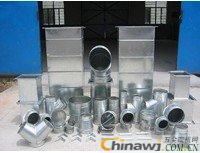Zinc "Coating" – A Historical and Practical Overview
China was the first country in the world to discover and use zinc. In 1922, Wang Tong conducted a chemical analysis of ancient Chinese coins and found that they contained zinc. Then, in 1923, Zhang Hongjun published two important papers titled "The Origin of Zinc in China" and "Re-discussing the Origin of Zinc in China," based on textual research and analysis of ancient Chinese currency. He concluded that zinc was used in China as early as the early Han Dynasty (first century BC).
The use of zinc in China began with the production of brass, an alloy of copper and zinc. During the Han Dynasty, there was a law prohibiting the use of "pseudo-gold," which scholars now believe referred to brass. In works from the Northern and Southern Dynasties (4th century AD), the term "meteorite" was used, which later research suggests was another name for brass. During the Tang Dynasty, records mention that brass was made from "calcium," which is zinc carbonate. One historical text, *Tang Shu*, notes: "During the reign of Xuanzong (712–755), there were ninety-nine furnaces in the world, each producing 3,300 bolts of silk and 21,200 jin of brass."
The Ming-era book *Tiangong Kaiwu* provides more detailed information about the process of refining brass. It describes how red copper (copper) and lead (zinc) are melted together to produce brass. This method shows that the Chinese had already mastered the art of working with zinc by the Ming Dynasty. Research indicates that metal zinc was refined in China by at least the Ming period. The process involved using zinc carbonate, known as "burning stone," to extract metallic zinc through distillation. Zinc smelting is relatively simple due to its low melting point (419°C) and boiling point (907°C), making it easier to extract than iron or copper.
For a long time, it was believed that the British were the first to refine zinc, with a patent issued in 1739. However, after further research, it was discovered that the British likely learned this technique from China around 1730. By the 16th and 17th centuries, China was producing zinc with up to 98% purity, which was exported to Europe by Western trading companies like the East India Company. Eventually, the zinc smelting techniques from China spread to Europe, where zinc came to be known as "Dutch Tin" due to its similar appearance to tin and the involvement of Dutch traders. In reality, it should be called "Chinese Zinc."
Zinc is a silvery-white metal often seen in small iron buckets used for water extraction. Its surface can develop ice-like crystals, which are actually zinc crystals. Zinc is commonly plated onto tin to prevent rust. Although zinc is more reactive than iron and tends to oxidize quickly, the oxide layer formed is dense and protective, preventing further corrosion. Because of this, zinc is widely used in galvanized steel products, such as pipes and barrels. Approximately 40% of global zinc production is used for coating steel to prevent rust.
According to Jinan black and white iron processing, zinc-coated materials are more durable than regular tinplate. While tinplate may corrode easily when damaged, zinc-coated surfaces remain resistant to rust. This is because zinc is more chemically active than iron and reacts first with oxygen, protecting the underlying metal. Besides being used in tin, zinc is also used in dry battery casings and in alloys like brass, which combines copper and zinc.
One of the most important zinc compounds is zinc oxide, commonly known as "zinc white." It is a popular white pigment used in paints. Zinc oxide turns yellow when heated and returns to white when cooled, making it useful in color-changing thermometers. Zinc is also essential for plant growth, with zinc sulfate serving as a micronutrient fertilizer. Some plants contain high levels of zinc, such as psyllium and celery, while certain cereals have up to 12% zinc.
In the human body, zinc is present in various tissues, especially in teeth and the nervous system. Interestingly, fish transfer most of their zinc to eggs before spawning. Zinc is found in the Earth's crust at a concentration of about one in 100,000. The most common zinc ore is sphalerite, a silver-gray mineral composed of zinc sulfide. Sphalerite is widely used in the industrial smelting of zinc. In 1971, global zinc production reached 3.7 million tons.
Finally, it's worth noting that zinc is often mistaken for lead. For example, galvanized iron wire is sometimes called "lead wire," and galvanized sheets are mistakenly referred to as "lead skin." These errors should be corrected. In some cases, the base material of tinplate may not be as strong as Q235 steel, but it is generally cheaper than galvanized iron sheet, which is commonly known as "white iron." Galvanized steel is used in roofing, piping, and containers due to its resistance to rust. Ungalvanized steel is usually referred to as "black iron."

Air Conditioner Copper Pipe,Seamless Copper Pipes,Flexible Copper Pipe,Air Conditioner Connecting Pipe
Suzhou Green New Material Technology Co., Ltd. , https://www.szgreenvip.com